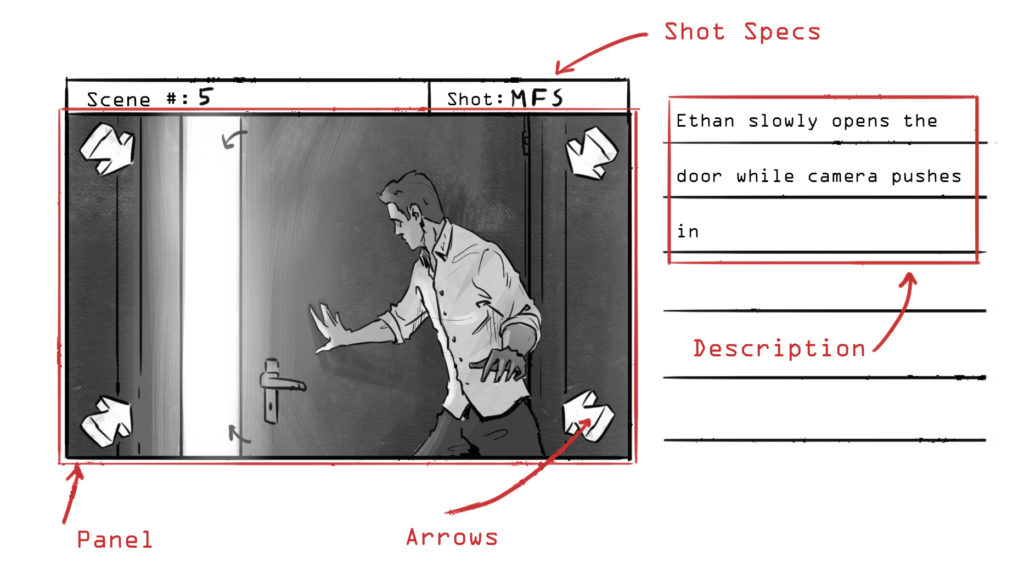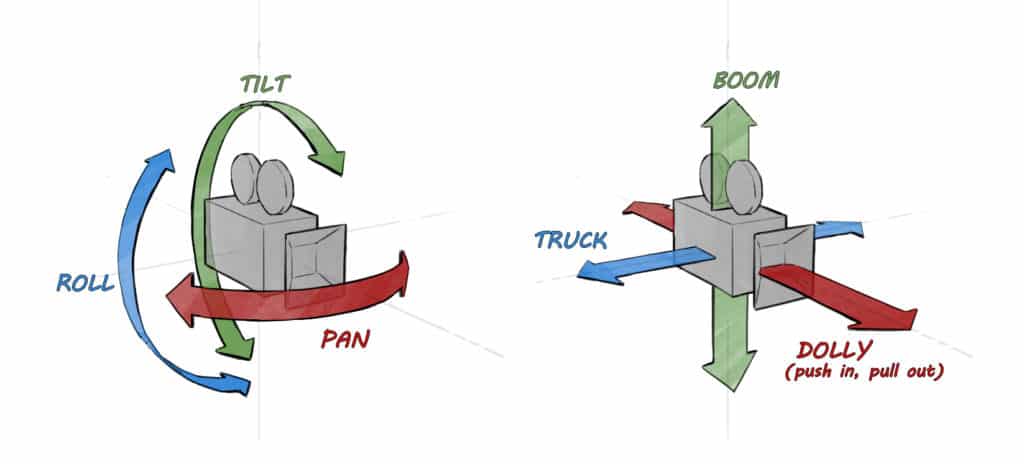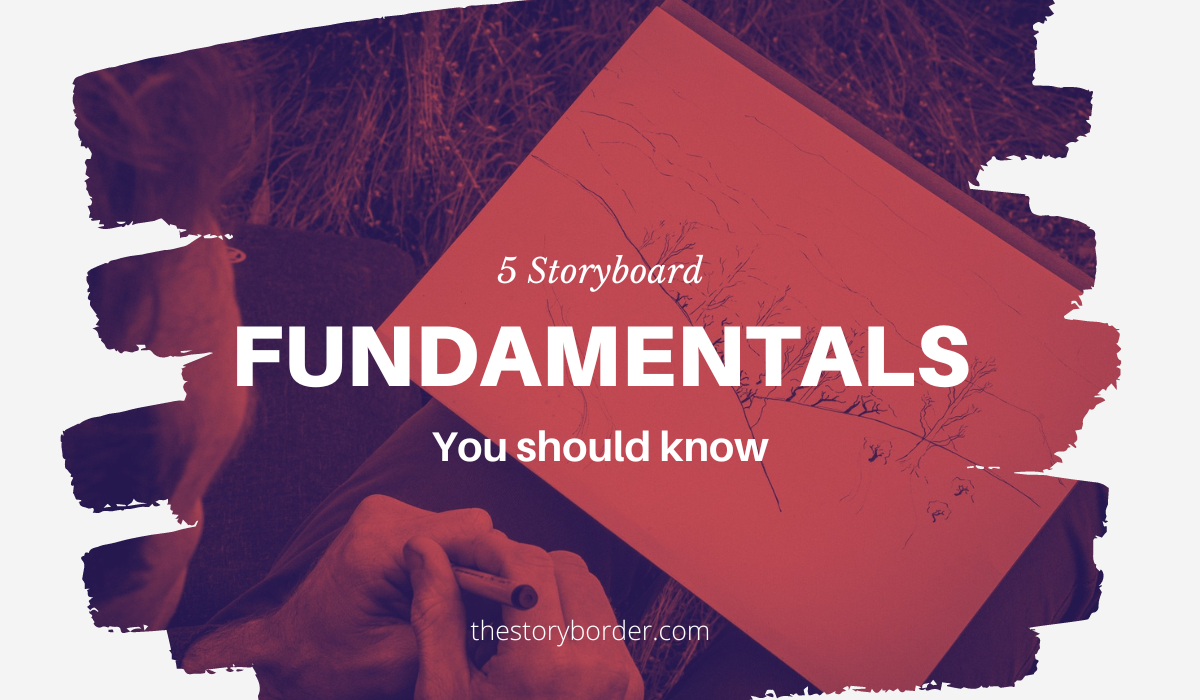5 STORYBOARD FUNDAMENTALS you need to know about
You find storyboarding really fascinating, but you just don’t know where to start and how to go about learning and practicing this form of art? Well, as always, it’s probably best to start with fundamentals.
Hi! In this article, we’re going to talk about storyboards. What is it, How it’s done and what are the basic things you need to know before you start learning? So let’s get started with storyboard fundamentals.
Elements of a storyboard
So, we know that storyboards are sequential sets of images that show us how the film, tv shows, or commercials should look like. It’s the first step in converting a written word or an idea into visuals.
If we’re gonna be making storyboards, first, we’ll need to know what the basic elements of a storyboard are:
- Panels – each individual image, or frame, that’s part of the sequence.
- Description – explanation of what’s happening in the panel. It can describe the action of the panel in more detail, show the dialogue, sound effects, or anything that’s relevant to that panel.
- Shot specs – what type of a shot is it, close-up, mid-shot, over the shoulder…
- Arrows – arrows show us the movement of the camera or the action in the scene.

Camera shots, angles, and movements
As you might probably know, films and tv shows, are usually filmed with these little things called “cameras”. So, if our job is to visualize how the final product filmed with a camera should look, we should know a thing or two about what kind of lenses there are and what kind of movements cameras can do.
Camera shots
Types of shot sizes are:
- Extreme Close-Up (ECU) – used to focus on a specific area of the subject in dramatic moments.
- Close-Up (CU) – focus on character head, used in important moments to show emotion.
- Mid Close-Up (MCU) – shot from chest to head.
- Mid Shot (MS) – shot that starts from head and ends below chest but above waist.
- Medium Full Shot (MFS) – or cowboy shot, frames the subject from knees to head.
- Full Shot (FS) – frames entire character.
- Wide Shot (WS) / Long Shot (LS) – encompasses multiple characters in a shot
- Extreme Wide Shot (EWS) / Extreme Long Show (ELS) – subject is extremely small on the frame.
Those are shot types based on size, and here some types of shots based on function:
- Establishing shot – WS or EWS, shows the location of the scene, feel and the scale of the environment.
- Master shot – MFS / WS, showing the spatial relation between the characters in the scene.
- Over the shoulder – MS of a character, over the shoulder of another character, confrontational.
- Two-shot – shot that shows two characters
- Insert shot – ECU shot focusing on item that’s important to the narrative.

Camera angles
The basic camera angles we have are eye level, low angle, and high angle. That essentially indicates how high is the camera, if it’s at the same level as the eye, above, or below.
There are also other examples, such as top angle and Dutch angle. The top angle is used in aerial view scenes, where the camera is high up and looking down. The Dutch angle is when we tilt the camera to the side, used for dramatic effects.
Camera movements
There are different types of movements filmmakers can use. Rotating the camera, moving it, and zooming.
Basic rotating movements are pan (horizontally), tilt (vertically), roll (on the long axis).
Push in is moving camera towards the subject, pull out is moving away from the subject and zoom is static camera with changing focal length.
Moving camera horizontally is called trucking shot, while moving it up and down is a boom shot.

There are many more camera movements that can be made by combining the ones above. Camera movement is crucial in storytelling, it can reveal information, and create emotion, a sense of unease, or stability. That’s why it’s so important for a storyboard artist to understand this.
Storyboard Composition
Composition is a huge topic that deserves its own article (or a whole book), but here, we’ll say a few words about its importance to the storyboard process.
Composition is an essential part of an image. It represents the arrangement of elements on the frame. And what do you know, some arrangements are more pleasing than others.
There are many tools at our disposal when it comes to composition, such as the rule of thirds, balance, depth, symmetry, leading lines, lighting, and so on. We will take a closer look at all these
concepts in later posts, but for now, we should know that composition is an extremely important tool for every storyboard artist, and we should study it.

Staging and Blocking
Have you ever seen a movie where none of the characters moves a bit, and they all stand in the same position for the entire movie? Probably not. Because we humans move all the time. The same is with the characters in movies, they will often have to move and do some stuff, and cameras should follow them.
That movement of the characters through the scene is called blocking, while camera movement in relation to blocking is called staging.
All those movements can tell a lot of the story. Are the characters moving away from each other, symbolizing their emotional distance? Or are they moving closer together, emphasizing the tension?
You can see why the staging and blocking are important and why you should understand them as a storyboard artist.

Emotion
As the name says, storyboarding is all about the story, and stories are all about emotion, so, understanding how to convey different emotions is a key part of this job.
When boarding a scene, the first question you should always ask yourself is “What emotion is this scene about?”. Is it joyful, uplifting, suspenseful, or sad? And then use all the tools at your disposal to convey that emotion.

Conclusion
In the end, storyboarding is about problem-solving. Your job is to communicate, to the rest of the team, in stills what the motion picture should look like. It’s about coordinating actors, cameras, dialogue, sounds, and everything that needs to come together to tell a story with emotion.
This might be a lot to you, but in the future, we’re going to make dedicated posts about each of these things and explore them in detail. But for now, these are some of the storyboard fundamentals: camera movements, composition, staging and blocking, and emotion.
